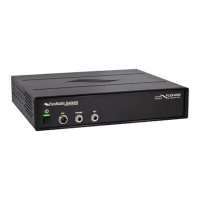FLEX-6000 Signature Series – FLEX-6000 Hardware Reference Manual
Page 32 of 48
Copyright 2016 FlexRadio Systems. All Rights Reserved.
8 INSTALLATION
8.1 SAFETY
Since your FLEX-6000 will likely be connected to many different antenna and external
interface conditions, safety is an important factor in your station setup. In addition to
grounding mentioned earlier, proper Electro-Static Discharge (ESD) and lightning
protection should be employed. It is outside the scope of this manual to go into details
regarding proper ESD protection. Please follow good amateur practice to protect yourself
and your investment.
8.2 RADIO PLACEMENT
Proper placement of your FLEX-6000 is important for maximum reliability. For proper
ventilation, place your radio on a hard surface in a dry area with at least 1” of clearance on
each side of the radio to allow for optimal fan operation and 2” behind the radio for cabling
clearance. An optional 19” rack mount kit is available for mounting.
8.3 ENVIRONMENTAL CONSIDERATIONS
This radio is designed for indoor operation in a clean dust free environment. Try to avoid
areas of wide temperature extremes. This includes placing the sides of the radio too close
to the hot exhaust of an external amplifier. Should the temperature inside the radio
become too high, the fans will automatically increase to a higher speed. (Note this can
happen after long periods of transmit.)
Δ - Do not operate this unit in areas of extreme humidity.
Δ - Avoid operating this radio in direct sunlight or other areas of extreme heat, excessive
vibration, or mechanical force.
8.4 CONNECTING TO A PC
8.4.1 Ethernet Cabling Requirements
The FLEX-6000 is designed to use CAT5, CAT5e, or CAT6 Unshielded Twisted Pair (UTP)
network cabling. If you need to make a network connection that is longer than the included
cable, be sure to use high quality cable. Note that the Ethernet specification requires the
cable to be less than 100 meters in length before a repeater or switch is required. You
should avoid the use of Shielded Twisted Pair (STP) type Ethernet cables. The shield can
provide a noise return path that can adversely affect receiver performance.

